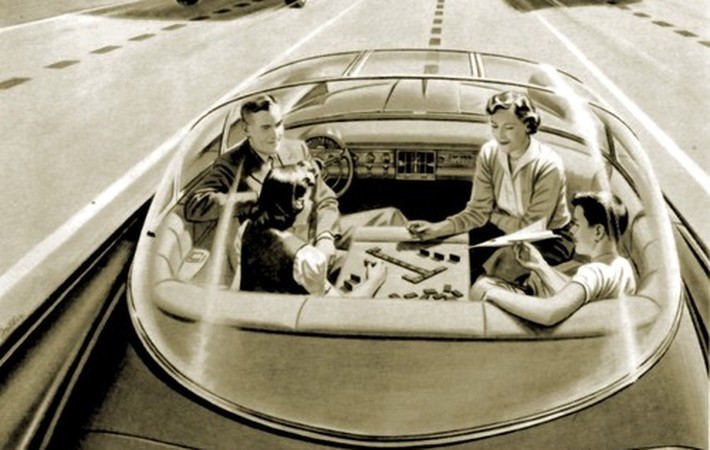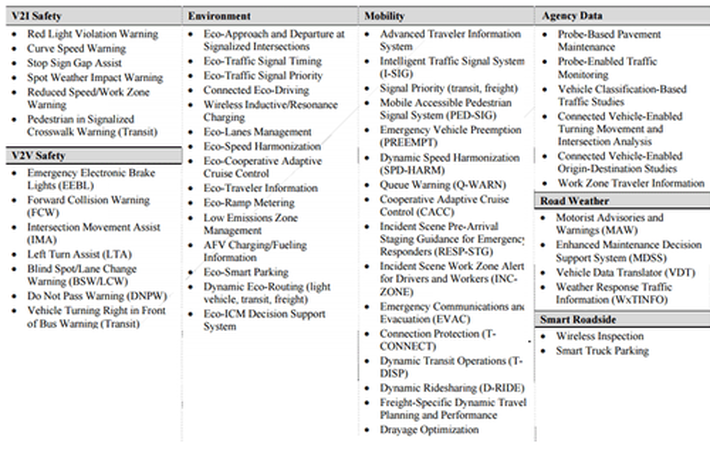
Published on 01/26/2017 | Technology
Think about what Wi-Fi, laptops, and the Internet did for social networks. It not only created a better avenue for communication but also efficiency to help launch some of the greatest companies today. Such is the theoretical promise of embedded sensors, cameras, and communication devices that will help autonomous motor vehicles “talk” to one another and the environment around them. After a few years of research, the National Highway Traffic Safety Administration (NHTSA) released a proposed rule that would require and standardize vehicle-to-vehicle (V2V) radio communications for new light vehicles. The V2V protocol would alert others of a vehicle’s speed, heading, brake status, and other information that would hopefully help people avoid potential crash situations. This is a positive step, with possible shortcomings, towards massive change within the auto industry. There drive towards autonomous vehicles will be based on three main pillars – Safety, Connectivity & Security.
A table of services that could potentially be offered by autonomous vehicle technologies:

Safety
The regulation was part of the Obama administration’s vision of creating consumer trust in this shift of how we interact with our cars, infrastructure, and environment. In a study by Deloitte that spans over 17 countries that compared people’s attitudes towards autonomous vehicles, the most preferred safety features were the ability of a vehicle to recognize objects on a road to avoid collision, inform the driver of dangerous driving situations or block them from one, or can assist in a medical emergency or accident. So while automakers tout the experiential features of future vehicles, the value that public policy should focus on is safety. Current technologies have limitations in terms of sensor range and inability to fully cope with sensor obstructions that V2V systems will not. The NHSTA foresees savings much, much larger than costs; 30 years out from when the mandate takes effect they are projecting $2.2 billion to $5 billion in costs ($135 to $300 per vehicle), but savings of $53 to $71 billion based on reduced costs associated with crashes.
Connectivity
Not only will cars be able to speak with one another but also they will be continuously connected to the cloud, which adds a further element of complexity. Today’s reality is far from the vision due to limitations in technology. Yet, connected vehicle technology is rapidly evolving from V2V to Vehicle-to-Infrastructure (V2I), Vehicle-to-Device (V2D), and Vehicle-to-Pedestrian (V2P) signaling and communication platforms which, when combined with non-vehicle applications encompasses an interesting future. With cars becoming more than merely a mode of transport but also a moving data center, the automotive industry will surely be at the forefront of the Vehicle-to-Everything (V2X) movement.
The shift to smart cars will require immense amounts of data, processing power and analytics. With its database, user interface, need for 5G network speeds and, now, the evolution of a communication protocol, vehicles are starting to drive towards creating a critical mass for autonomous vehicles. However, a critical mass may never develop if top-down mandates are not enacted as law. Otherwise, proprietary communication protocols may well be developed from different angles, which would result various piecemeal networks. What good would that be when all vehicles are expected to run on the same roads, use the same infrastructure, and abide by the same rules of the road? A V2V protocol is necessary to enable connectivity among all autonomous vehicles.
Security
Security is what makes the NHTSA’s vision complete. The promise of autonomous driving is surely based on safety, which is an important first step, but equally as important is secure data connectivity and a network that promises to protect the privacy of the driver and all of his/her passengers. Creating mandates and a vision forward will pay dividends. Yet, shrouding the shift in experience with layered security will be more important and a harder task to bring to fruition. Vehicles are but one component of “smart cities” and “smart infrastructure.” The security complexity arrives in the form of more than 100 million lines of code in the modern vehicle. This code comes from third parties, and probably contains open-source components with security vulnerabilities. Intelligence and automation only increase the risk of hacking, surveillance, and intelligence gathering.
Conclusion
As the relationship between car and driver continues to evolve, safety, connectivity, and security will be the pillars that drive the auto industry forward. The vision of autonomous vehicles is clear but the path is littered with potential roadblocks. V2V communications relies on a specific communications protocol known as dedicated short-range communications (DSRC). The wireless industry may be able to use cellular signals to better serve the protocol’s purpose. Additionally, V2V communications is predicated on the fact that all or most vehicles are equipped with communications technology. The question of who bears the cost and how quickly existing cars can be replaced is yet to be answered. However, at its core, V2V is about public and personal safety that also allows a promise for the future of “smart environment”.
Society will greatly benefit from these solutions in the form of reduced insurance and medical costs and greater fuel savings as transportation contributes 28% of U.S. greenhouse gas GHG emissions, with traffic congestion wasting some 2.9 billion gallons of fuel. In terms of accessibility, reliability and mobility, V2V is the first step to help reduce the 4.2 billion hours of travel delays on U.S. roads, which translates into a $78 billion tab in terms of urban traffic congestion. The steps that the NHTSA as well as the automotive industry must take will be an incredible asset to transform our lives and expectations of how the connected car will be the ultimate example of the Internet of Things.